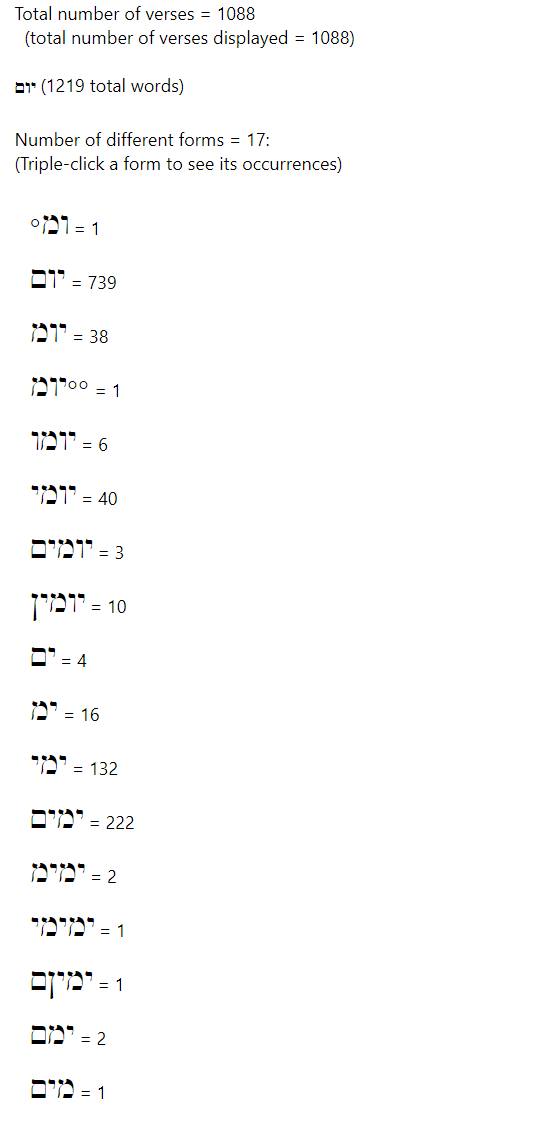Hi Charles,
Charles Loder wrote: ↑Thu Oct 22, 2020 7:17 pm
ducky wrote: ↑Thu Oct 22, 2020 3:17 pm
When I studied, they showed us two optional reasons of why the "a" was turned to "o".
1. the word יום=yawm (in the form of Semitic qatl
the "aw" is a diphthong.
"aw" in Hebrew turns to "o".
2. In Ugarit (and also, as I see mostly in Hebrew archaeology) the word is written ים. and so, we have "yam" that was turned to "yom" based on the Canaanite Shift.
The Aramaic and Arabic evidence also indicate that the /o/ in
יֹום is a contraction and not a shift.
I never claimed that Ugarit, Arabic, or Aramaic had a Canaanite Shift.
I said that when I studied, they showed us two options of how this "o" was created.
But I was wrong when I gave this word יום as the case.
After reading your comment, I try to remember, and I now remember that it was not the word יום that they showed us, but it was the word קול.
which they showed us the Ugarit "qal" vs. the Arabic "qawl".
So I made a mistake by pointing to this word יום - which everybody sees it derived from "yawm".
Charles Loder wrote: ↑Thu Oct 22, 2020 7:17 pm
In Ugaritic,
ym /yôm(u)/ is also a contraction of a dipthong; not the Canaanite shift.
See Pardee
There is no evidence for secondary “lengthening” of the short vowels (e.g., /a/ => qameṣ in Biblical Hebrew) or for any shifts of the long vowels (e.g., the “Canaanite shift” /a/ => /o/).
(p. 25)
and
YM common noun ‘day’ /yômu/ (p. 313)
I know Ugarit doesn't have the Canaanite Shift, and therefore, I wrote in my last comment the form "yam".
But just a question that interests me...
can you check how this word "ym" is written in Ugarit?
Is it always "ym" or does it have also occurrences of "ywm"?
and If it always just "ym", why do they see it always as "yom"?
is it only because of other languages' support? or it can be seen also by the Ugarit itself?
Also in the Hebrew archeology, the word is mostly "ym"
and I wonder... where is the rooted W?
could it be that it was pronounced as "yawm-->yam" - as if the diphthong was somehow kept softly and the W slowly "disappeared", or that it was turned to "o" - but if so, where is the W in the word?
Charles Loder wrote: ↑Thu Oct 22, 2020 7:17 pm
Now, all that to say that I'm not 100% sure how (the Tiberian Masoretes [scratch that]) Sephardic readers would have pronounced the qamets in
יָמִים (either as qatan or gadol). I'm curious if Qumran ever has a form like
יומים???
The Qamats was sure "a", because no matter how you see it, it derived from "a" sound.
And we don't have to go to Qumran, also in the Mishna, we have the question of "מה יום מיומים"

